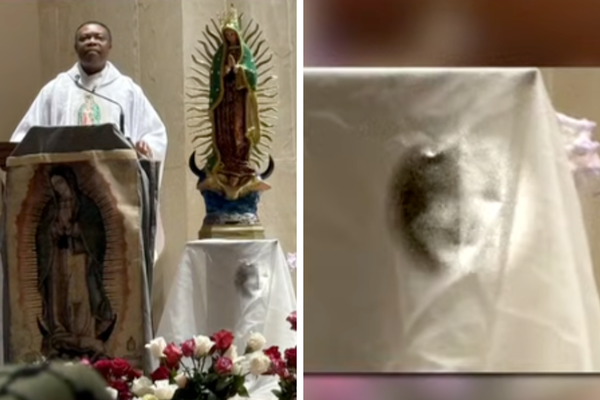
Despite the still-chilly spring wind, there was work to be done. Supporting themselves with a single lifeline, the men defly climbed up the chimney to do a job that has become rare these days.
Some children stood by with a camera to capture what to them must be a unique scene, but which used to be a rather common sight everywhere.
The men going aloft are called entotsu-ya -- chimney sweeps. And they do everything from cleaning to reinforcing chimneys, as well as building and dismantling them.

Yoshio Saito of Saito Entotsu Seibi in Sumida Ward, Tokyo, has been in this business for 62 years. Since being apprenticed to his father at the age of 17, Saito has been climbing up chimneys almost every day.
Back then, many sento public bathhouses used to burn firewood to boil water, and Saito and his colleagues would clean five or six places a day. This required getting into dark, coal-black chimneys and brushing the soot off with a bamboo broom.
Nowadays, almost soot-free gas boilers are the mainstream, and Saito goes out to clean about five chimneys a year.

"No one else are doing this now, so I take pride in my job and will climb up as long as my physical strength lasts," Saito said.
In the early morning of April 15, Saito climbed up a chimney to wrap a steel band around the top to reinforce it against typhoons. The chimney belongs to the long-established sento Nozaki Yokujo in Arakawa Ward, Tokyo, which has been in operation since 1954. The bathhouse's third-generation owner, Shunichi Ichikawa asked Saito, whom he has known for decades, to shore up the chimney. Nozaki Yokujo is one of the few bathhouses that still uses firewood.
"The after-heat from burning wood lasts for a long time, so the water doesn't cool down easily," Ichikawa said. "That's why the water feels so soft and mild on your skin."

A total of 500 kilograms of wood is needed to boil water that is pumped up from 100 meters below ground. Ichikawa starts boiling from 10 a.m. and adjusts the temperature every couple of hours. It's a tough job to literally face the flames in a room more than 40 C. His cheeks turn red from the heat.
"Many of my customers are elderly people. They come all the way here, so I have to make good, hot water," Ichikawa said.
There used to be more than 2,600 sento in Tokyo at its peak, but now there are only about 520. Amid the spread of the new coronavirus, the combination of these professions is supporting the health and comfort of people without baths in their houses.

Read more from The Japan News at https://japannews.yomiuri.co.jp/







